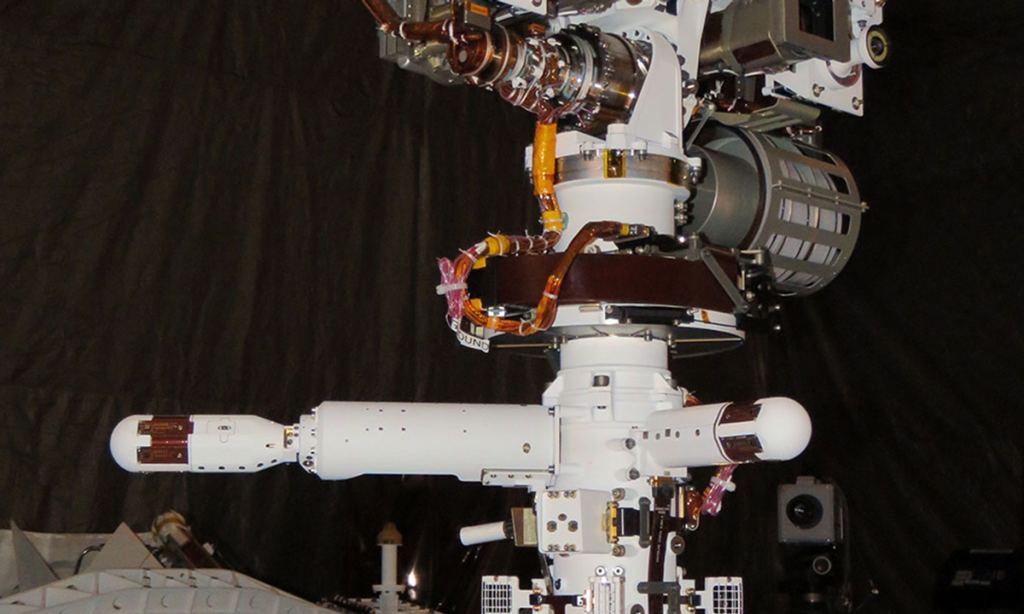Dust devils are generally used as a trope in media when the writers want to know that an area is deserted. They signify the desolation and isolation that those places represent. Almost none of the settings of those stories are close to the isolation of Perseverance, the Mars rover that landed on the planet earlier this year. Fittingly, the number of dust devils Perseverance has detected is also extremely high – over 300 in its first three months on the planet.
The paper discussing those findings, written by Brian Jackson of Boise State University, is available on arXiv. Data used in that analysis was collected by a suite of instruments on the rover known as the Mars Environmental Dynamics Analyzer (MEDA). That suite includes everything from humidity and wind sensors to ground temperature and dust optical sensors.
 MEDA Instrument on Earth.
MEDA Instrument on Earth.
Credit – NASA / JPL-Caltech
Those sensors were all put to good use, collecting data on that many dust devils. However, this wasn’t the first time dust devils were seen on Mars – the Viking missions first noticed them back in the 1970s, and they have been visible even from space by orbiting satellites for years. But never before have as many fine-tuned on the ground sensors been able to collect a myriad of data on the phenomena.
Other rovers have also experience dust devils, but Jezero crater, Perseverance’s landing site, seems to have a high occurrence of dust devils. Meteorological predictions suggested that might be the case, and observational evidence from Perseverance so far has confirmed those predictions.
UT video discussing the hazards of Martian dust.What the predictions didn’t expect was the number of dust devils that didn’t involve any dust. Only about 20% of the 309 vortices – nearly 5 per sol – detected dimmed the light around the rover by more than 2%. An “insolation” (i.e., light detection) sensor was used to estimate how much dust was in the air during the events. Even with relatively limited dust uptake, scientists believe that dust devils are one of the most significant contributing factors to the amount of dust floating around Mars’ atmosphere.
Martian dust is notorious for its difficult clinginess and toxicity and could prove a problematic hazard to deal with when crewed exploration missions start. This confirmation of meteorological models with Perseverance’s data is a positive step toward genuinely understanding Maritan weather patterns. But it also might mean that Jezero Crater isn’t a particularly great place to go with the first human missions.
Learn More:
Brian Jackson – Vortices and Dust Devils As Observed by the MEDA Instruments onboard Mars 2020 Perseverance Rover
Space.com – Perseverance rover spots its first dust devil on Mars
UT – Summer is Dust Devil Time on Mars
UT – This is a Dust Devil… on Mars
Lead Image:
A large dust devil on Mars.
Credit – HiRISE, MRO, LPL, University of Arizona, NASA

